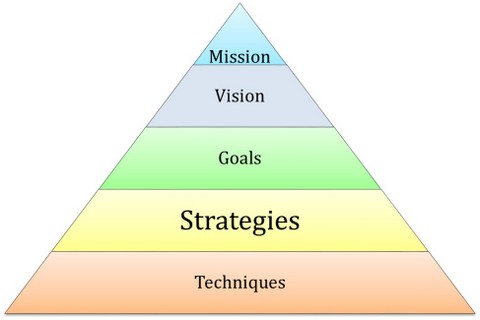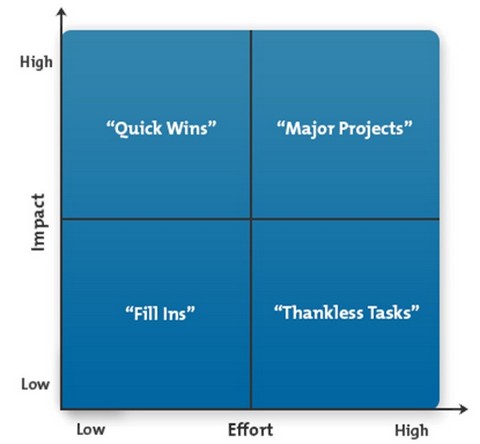
We are setting up a hierarchy of documentation so we could have a framework within which we could work and develop the Choko Tree Farm in an orderly and comprehensive manner. To recap –
The first document in the hierarchy, the mission statement, is a succinct statement of where we see our project (in this case, the choko farm) going, it puts down on paper what we want to achieve, big picture.
The second document, vision statement is a much longer description of what we see the project looking like when our mission statement is fully implemented.
The Third document covers our goals, or how we can measure whether the mission and vision statements are completely implemented, ie if the goals have been fully met, implementation is complete (and we can then develop new goals if required).
So taking into account the mission and vision statements, we identified the following goals for the choko tree farm -
- Energy: Our energy requirements will be, captured, developed or generated on the property.
- Water: All rainwater falling on the property will be captured, we will reduce our consumption of town water to as low a level as possible.
- Food: Our food will be produced organically sufficient to contribute to two meals a day for the two of us.
- Waste: No waste shall leave the property.
- Community: We will work within our community to help others live more sustainably.
- Livelihood: We will generate our income ethically.
The goal is what we want to achieve, and the big picture of how we are going to get there is encapsulated in the strategy. Later on down the line, I will develop series of techniques to implement each strategy.
Developing the strategies
If you are only starting out in this process you will have a blank slate, but we have been going for a while so my first step was to identify which strategies we had in place already, and whether they were working for us or not.
In our case, for most of our goals we already have some working strategies in place, but they do not necessarily take us up to where we have achieved the goals we set. So we needed to review current strategies and identify -
- Which ones were essentially operating as required and not needing any work beyond maintenance. (Marked as “Completed”)
- Which ones were not implemented at all, not fully implemented, or not working as desired and requiring a more thorough review. (Marked as “Ongoing”)
- What strategies there were out there which were applicable to our situation, but not as yet considered (noted in terms of “what have we missed?”)
How did we find out if there are better strategies out there which we had missed? We continued researching regularly by:
- reading books and magazine articles concerning our goals and where we wanted to go,
- keeping an eye out on the web to see what ideas were percolating out there,
- talking to people who are working in our areas of interest, including permaculture people within and outside our own permaculture group.
When we come across a new idea, we review it against our current strategies to see if it is worth inclusion or could replace an existing strategy. If your journey is anything like ours you may find inspiration when you least expect it! We check out bookshops, both new and second hand, regularly and twice in the last couple of years we have had lightbulb moments –
The first one, a couple of years ago now, was picking up (then buying) a small book called “Gardening with Less Water” by David Bainbridge. The information within it on low cost, low tech irrigation techniques caused us to totally rethink how we use water in the garden. It caused a quantum leap in our strategies in the area as a result and not a few forehead slapping moments for myself where my response to an idea was “why didn’t I think of that?”
The second occurred much more recently. I picked up a copy of “Edible” (by Daniella Martin”) at a cheapie bookshop in the southern highlands. I gave it a cursory glance and bought it, but have now read it cover to cover. There is a lot of information about insects as food in the book and it has already enlightened our food strategy.
It is important to remember that strategies we have selected are not cast in stone. They need to be reviewed regularly (we review ours at least yearly at the Directors’ Meeting) to make sure they are still working and appropriate. However a strategy can be discarded or replaced if it is no longer working or through research it becomes obvious that there are better strategies out there with will get us where we want to go.
Conducting the Review
My review of our strategies consisted of writing all of the strategies down on a piece of paper (alright, typing them up on the computer), under the goal to which they applied, and then putting down a few lines summarising what they were and now they were working. As mentioned above, they were then designated as “Completed” or “Ongoing”. Some strategies required breaking down into a number of sub-strategies to make sense (to me at least). For example I broke the food strategy down into two sub-strategies – Edible plants and Protein sources.
We had a mini director’s meeting so that I could gain the perspective of my lovely Choko Tree partner. This resulted in adding a couple of strategies I had forgotten about as well as the changing of a couple of strategies which I considered to be “completed” back to “ongoing”! With my list of strategies now nominally complete I could move on to the next part.
An extract of the review is reproduced below and the whole review document can be downloaded here.
Energy Goal: Our energy requirements will be, captured, developed or generated on the property.
Our Energy Strategy to deliver the goal
• Conduct energy audit
This is first on the list for good reason, it helped us determine our position regarding energy consumption – how much of what energy source we used – which then enabled informed decision making so we could tackle the greatest area of energy consumption first. We did it a few years ago and found it very enlightening! (Completed)
• Research ways to reduce energy consumption
Our greatest area of energy consumption (as I expected) was electricity, followed by gas, followed by wood. A lot of reducing energy consumption can be behavioural. No cost involved but habits can be challenging, especially the habits of other family members! There are other strategies we implemented, like building and using low energy/alternative energy appliances such as a stored heat cooker, solar oven or rocket stove which we have and use. (Ongoing)
• Replace grid supplied with renewable energy generated on site
This is an expensive one, and it took a while to get it working efficiently, but it all seems to be working well. There have been a number of unforeseen impacts, one of them being that some electrical appliances which we got rid of have been re-acquired, like a slow cooker and rice cooker. They can use excess electricity production and reduce our reliance on gas for cooking. (Completed)
• Provide electricity storage
This has been done in the form of two, 24 volt, nickel iron battery banks which will see us out and probably be still in use by our grandkids. (Completed)
• Investigate biomass energy options
During winter we heat and cook with a Nectre bakers oven slow combustion stove, some of the fuel we are able to source from local and more or less sustainable sources (trees being cleared, dropped limbs etc.) but the majority we have to buy in from a commercial seller. There is considerable work to be done to allow us to reduce our reliance on this type of firewood. (Ongoing)
Prioritisation
I separated out the “ongoing” strategies and then tried to prioritise them somehow. One criterion I wanted to use was if the strategy would deliver movement towards more than one goal. For example, looking closely at biomass heating options can provide a way to use tree trimmings and thus contribute to achieving waste goals as well. Another well-worn example is the chook tractor which provides protein (eggs) but also fertilises and cultivates the annual vegetable beds, supporting vegetable production. Unfortunately, in the event most strategies seemed only to apply to one goal with only one or two notable exceptions, as noted above and conducting sustainable living workshops in our area – fitted in under community and livelihood.
In the end, after some research I came across the Action Plan Priority Matrix, which enabled me to compare the strategies based on the amount of effort required to implement them, versus the impact they would have on the progress towards the goal. The matrix is reproduced below –

To use the matrix to evaluate each strategy, I give it a figure from one to ten on each of the two axes, then divide the strategies into one of the four resulting groups.
Strategies with high impact and low effort are obviously a high priority, labelled as “quick wins” in the matrix you get a good outcome with a minimum of effort. If there is high effort but also high impact these “major project” strategies are good but need to be well programmed to make sure the resources are available for their completion. Also one major project may take the place of several quick wins, in terms of the resources which can be committed to it so this must also be factored in.
A strategy with low impact but also low effort is regarded as a “fill in” to do when there is some spare time/resources available, but would not be a focus. Low impact but high effort strategies (called “thankless tasks” in the matrix) may be avoided.
To help myself out I put all of the ongoing strategies down under their respective goals and evaluated them using the matrix (ie assigned a number for impact and a number for effort). Then, using the evaluations I divided the strategies up into the four categories, with the associated goal noted at the end.
An extract of the results of the prioritisation process is reproduced below and the entire prioritisation document, including the final summary by group, can be downloaded here.
Energy Goal: Our energy requirements will be, captured, developed or generated on the property.
Our Energy Strategy to deliver the goal
Research ways to reduce energy consumption
Impact: 9 Effort: 5 = quick win
Investigate biomass energy options
Impact: 7 Effort: 7 = major project
Find ways of ameliorating high summer temperatures
Impact: 8 Effort: 5 = quick win
Investigate options for active heating and cooling
Impact: 4 Effort: 8 = thankless task
After all of this good work, I decided to pick two quick wins and one major project to work on over the next few weeks. So the next job will be to develop techniques and actions which will enable me to implement those strategies!
The Strategies I picked –
Major Project
- Develop and utilise predator and pollinator services (food - Grow Edible Plants Year ‘Round)
Quick wins
- Research ways to reduce energy consumption (energy)
- Perennial vegetable beds (food - Grow Edible Plants Year ‘Round)



